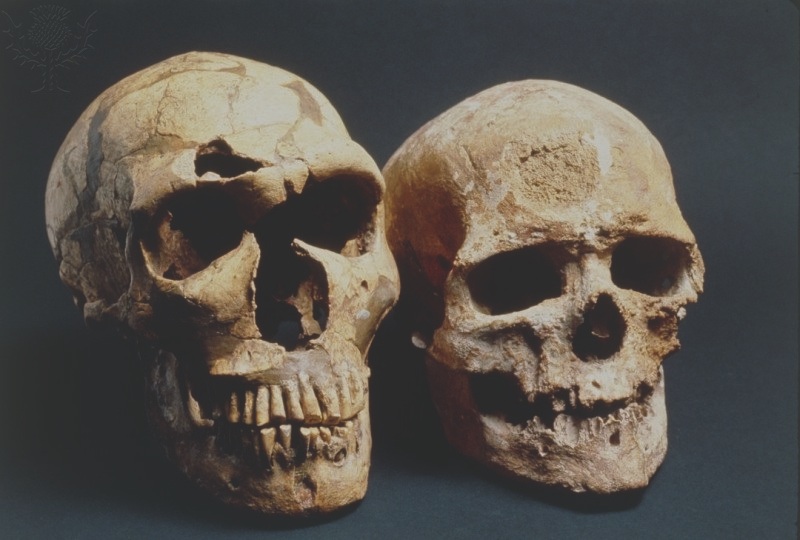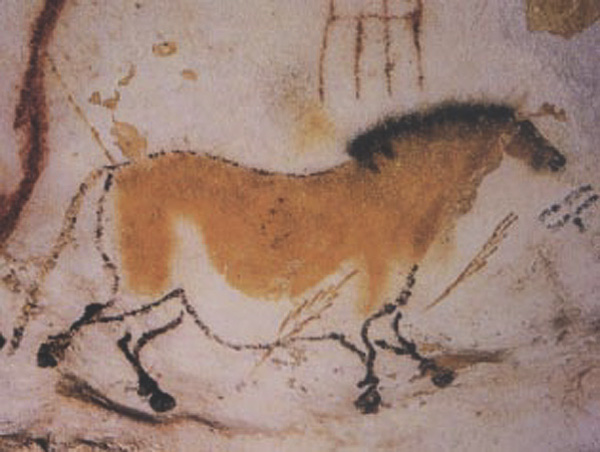People of the Late Ice Age
Episode #3 of the course Human history and the first civilizations by Brian Fagan
Welcome to the third lesson, where we describe the world of the Late Ice Age, between about 45,000 and 15,000 years ago.
By 45,000 years before present, fully modern humans were well-established in Africa, the Middle East, and Europe. But the 30,000 years or so covered here also saw Homo sapiens well established as far afield as Australia and parts of Siberia.
Europe: The Cro-Magnons
Few, if any, moderns lived in Europe before about 45,000 years ago. Climatic conditions were cold, but not extreme, which made it easier for the newcomers to adapt to their new homeland. They brought with them lightweight, effective hunting weapons, which enabled them to hunt a broad array of animals, even those as large as the wild ox and the bison, then abundant in Europe.
A sparse population of Neanderthals was no competition for Homo sapiens with their more developed intellectual powers and sophisticated weapons. However, genetics tell us that a few moderns interbred with Neanderthals, for there are some Neanderthal genes in Europeans of today.
The first modern Europeans are named the Cro-Magnons, after a rockshelter in southwestern France, where some of their burials were first discovered. They were sophisticated hunters who preyed on migrating reindeer and other animals. Cro-Magnons adapted successfully to the intense cold that settled over northern latitudes between 30,000 and 15,000 years ago. Their important tools included bone needles used to sew tailored layers of clothing that allowed them to hunt in sub-zero temperatures.

Neanderthal and Cro-Magnon skulls.
Unlike the Neanderthals, the Cro-Magnons enjoyed a complex ritual life, much of which revolved around hunting. They were skilled artists, too, who adorned many of their bone and antler tools with fine engravings of animals like reindeer, and complex decorations. Deep in dark caves, they painted and engraved their prey, creating naturalistic images of the arctic elephant, the mammoth, wild bulls, bison, reindeer, and other animals. They also left hand impressions on the walls, perhaps drawing supernatural powers from the spirits of animals from behind the walls. The meaning of the paintings at such well-known sites as Altamira, Grotte de Chauvet, and Lascaux is unknown but was obviously connected with hunting.

Cave painting made by the Cro-Magnon people from Lascaux, France dated to approximately 16,000 years ago.
The Cro-Magnons flourished until global temperatures warmed when the Ice Age ended around 15,000 years ago. Their descendants adapted to more forested, warmer environments.
Central Asia
To the east, hunting bands had settled on the open plains of eastern Europe and central Asia by at least 35,000 years ago. Like the Cro-Magnons, they were successful big-game hunters. They dwelt in shallow river valleys, spending the winters in circular houses built of mammoth bones partially sunk into the ground.
They were constantly on the move during the brief summers, covering enormous distances that took some groups at least as far east as Lake Baikal in Siberia. Here, they may have had sporadic contact with hunters from eastern Asia, as well as bands living along the Pacific coast.
Moderns in the South
Scattered bands of late Ice Age moderns were well-established in Africa south of the Sahara, as well as in southern Asia by 40,000 years ago. Among them were the remote ancestors of San hunter-gatherers, who still survive in southern Africa today. These groups adapted to both open savannah and densely forested environments. They relied on plant foods and hunting with bows and arrows. Some groups survived long after the first farmers settled south of the Sahara some 2,000 years ago. The ancestors of the San were also expert artists as long ago as 20,000, perhaps even earlier.

Map of early human migrations.
Colonization of Australia and Pacific islands
Sea levels were much lower during the late Ice Age, which meant that water passages were short. Modern humans had settled in Australia perhaps 45,000 years ago—the date is uncertain—in New Guinea by 40,000 and on some southwestern Pacific islands by 30,000.
By the end of the Ice Age, diverse populations of modern humans had settled every corner of the Old World. Only the Americas were uninhabited. When did the first Americans colonize the unknown continent? This is the question we consider in Lesson 4.
Recommended book
Cro-Magnon: How the Ice Age Gave Birth to the First Modern Humans by Brian Fagan
Share with friends
